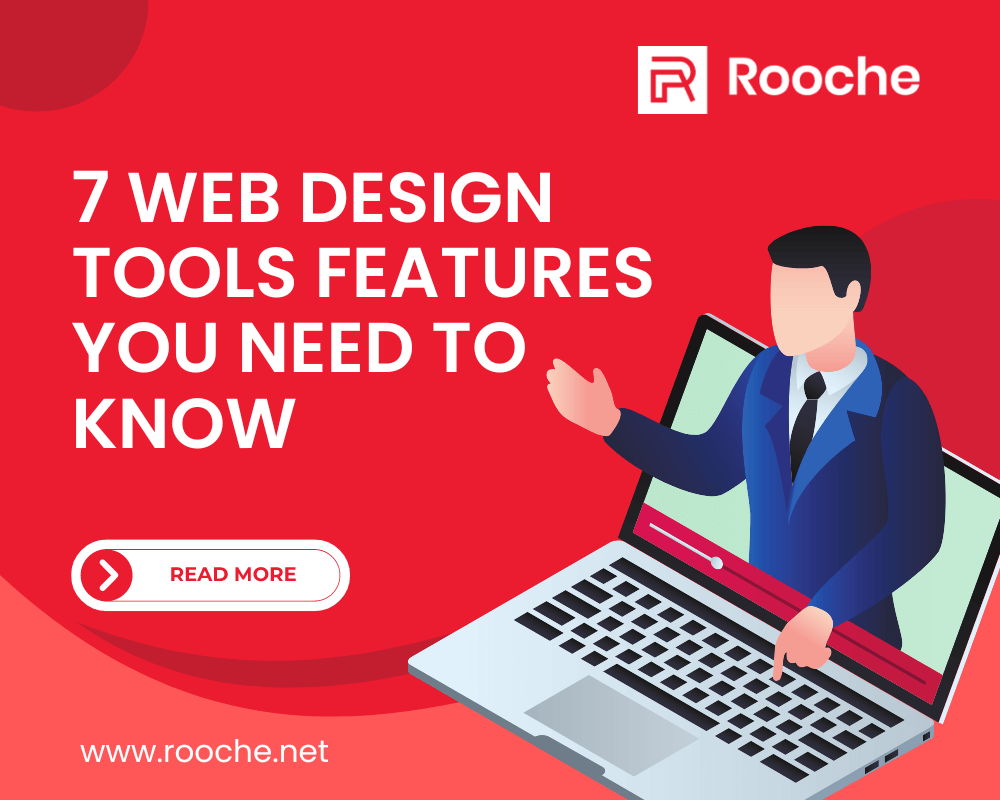The Evolution of Mobile App Development: Trends and Forecasts for 2023
Mobile app development has undergone a profound evolution, reshaping the way businesses operate and individuals engage with technology. As we […]
Oct 5, 2023
Dec 8, 2022

Every website you see on the Web today is a product of web design in one way or another. Whether you’re looking at a site built from scratch by a web developer or a site that uses a design tool like Adobe Muse, every place was designed and made by someone.
The best websites are those that use design tools. The website designer has complete control over the look and feel of their website from the beginning, which means they can make changes to improve their branding, messaging, and overall user experience as much as they need to. When it comes time for updating your site’s content and images, you won’t have to worry about whether it will work on different devices or not because the design tool has already taken care of that for you.
And while your business is unique, you’re probably going to be using some of the same tools as your competitors—which means your website could end up looking just like theirs if you don’t choose a tool that lets you customize your design.
You want to ensure that your website is a true reflection of your brand. It is vitally important that your site reflects your brand style. Make sure your chosen web design tool lets you customize everything from fonts to color schemes and beyond.
When it comes to web design tools, there are tons of options on the market, and choosing the right tool for you can be overwhelming. So what should you look for, exactly? First off, there are two basic categories for a web design tool: editor and builder. The main difference between them is that an editor allows you to tinker with the code and therefore offers more control over the design process. On the other hand, a builder is a better option if you’re a beginner or don’t have time to learn to code.
With all of the different tools for creating your website, it can be hard to know what you need and don’t need.
One thing that’s really important in a web design tool is the presence of pre-designed templates. Having a strong set of templates makes it easier for users to get started, and also helps them see what their website can look like if they choose to use one. Without templates, a web design tool would be just another blank canvas, which many people wouldn’t know how to use.
And while your business is unique, you’re probably going to be using some of the same tools as your competitors—which means your website could end up looking just like theirs if you don’t choose a tool that lets you customize your design. You want to ensure that your website is a true reflection of your brand. It is vitally important that your site reflects your brand style. Make sure your chosen web design tool lets you customize everything from fonts to color schemes and beyond.
One of the most critical features of any web design tool is compatible with your current systems. Suppose the tool you’re considering doesn’t work well with your current CMS. In that case, it will be impossible to integrate new content seamlessly into your website, which can impact your overall site performance. At the same time, if your web design tool isn’t compatible with today’s browsers and devices, it’s not going to do you much good.
One of the essential features to consider when choosing a web design tool is the fonts and graphics available for use. The best agencies will have an extensive library of fonts and graphics from which to choose, including free options for commercial use. While some tools charge for these resources and others only provide their proprietary fonts and graphics, plenty of tools offer them free of charge.
Another feature to look out for in a web design tool is creating custom backgrounds. Suppose you’re planning on designing logos or banners. In that case, this feature is significant because it allows you to place your branding elements right onto your webpage without having to code them into place. The best tools will also allow you to change your site’s color scheme to match your overall brand aesthetic.
How easy is it to get up and to run on this platform? Is it intuitive and straightforward, or do you need a degree in computer science to figure out how to get started? The more you can do with this tool, the harder it might be to learn, but that doesn’t mean it should be impossible. Look for walkthroughs and demos before jumping in, so you can be sure you know what you’re getting into.
Most web design tools are subscription-based, which means they have monthly fees that can add up quickly. If you’re planning on using this for a personal site or blog, make sure the price isn’t going to break the bank. But if you’re building a place for a business or client project, the price might not be as big of an issue—make sure it’s worth it.
There are lots of fantastic web design tools out there, but some are going to be a better fit for you than others. To make sure you’re getting the tools that work best for your needs, it’s essential to consider the features we mentioned above.
Web design is a complex skill to learn, and it takes years of practice to perfect. If you’re trying to create a website for the first time or just trying to figure out how to make your site perform better, we can be a valuable resource. We’ve designed thousands of sites and know exactly what makes them work. Talk to us, and we’d love to help!

Mobile app development has undergone a profound evolution, reshaping the way businesses operate and individuals engage with technology. As we […]
Oct 5, 2023
One of the biggest challenges in creating the website is to catch user’s attention within 15 seconds and make them […]
Dec 8, 2022

When you write a blog post, you want it to be found. You write the article, promote it with your […]
Dec 8, 2022
Join our newsletter and be the first to receive future promo and sale updates from Rooche!